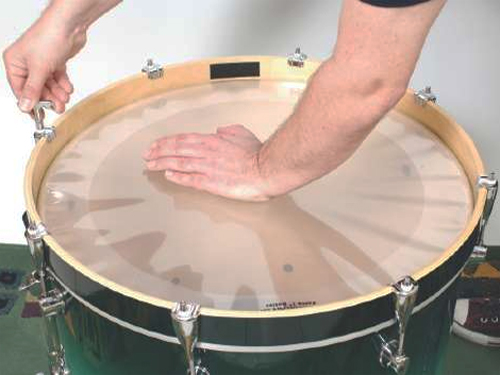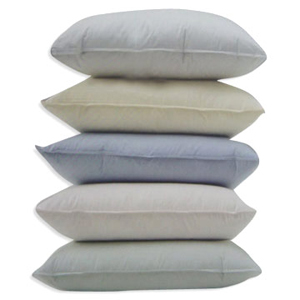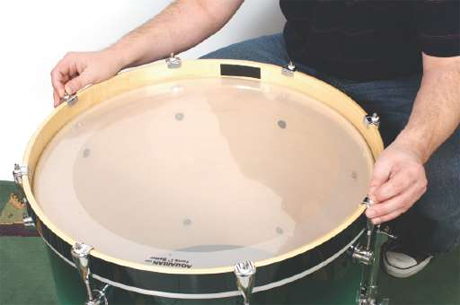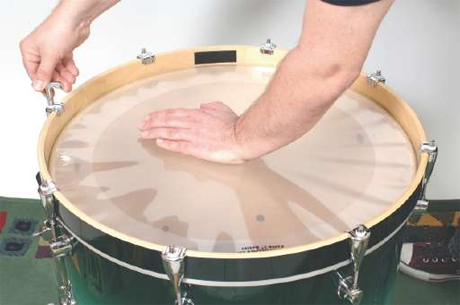How to tune a bass drum, in 7 steps
How to tune your kick like an expert

Tuning your drums is a complicated affair. After all, you spend all your time behind the kit, so your experience compared to that of your audience differs incredibly.
• How to tune a snare drum
• How to tune toms
Fear not, though, we've put together 7 fail-safe steps to help you tune your bass drum, to benefit both parties!
1. Only use one hole (if at all)
Many drummers will debate the whys and wherefores of portholes in the front skin. But while holes certainly do have a place - particularly if you want a sound with emphasis on the beater attack - often drummers use them 'just because'.
"The resonant head is the key when it comes to a great bass drum sound"
With good tuning and the right head choices, it is very possible and often highly desirable to keep the front head completely intact. If you do use a hole, however, do not use more than one preferably kept to a maximum of 5".
Two ports of this size can look funky, but you might as well remove the front head altogether for all the good they will do for your sound. Secondly, more low end and projection will always be attained with a resonant head without holes.

2. Think about dampening (do you really need it?)
Next we come to the issue of dampening - pillows, cushions, blankets, felt strips, etc. As a general note, try to think about the environment in which you are playing before grabbing the nearest duvet!
Want all the hottest music and gear news, reviews, deals, features and more, direct to your inbox? Sign up here.
In the majority of cases, when playing in a live situation, such heavy dampening just isn't necessary. If you are in recording mode then some extra help (particularly on larger bass drums - 24" or 26") may well be useful but otherwise, do try to keep things to a minimum and allow your bass drum to breathe.
Once again, the issue is one of projection and tone. Dampened bass drums can sound great from the playing side - particularly if you are playing the kit on its own - but out front once the band strikes up, the bass frequencies can become lost in the mix. So give yourself a good chance of being heard with clarity.

3. Choose your head wisely
If you choose the right heads for your drum and sound needs in the first place, it'll be an effective combination regardless of playing situation. You may have to tweak the tuning, but that's what this is all about, right?!
First off, review the seating process. Place the head on the drum and tighten tuning rods to finger tight, in opposite pairs. Then stand in the centre to really stretch the head out. Once you've done this, go back and check that all the rods are still finger tight.
With a new head, you will almost certainly find that one or two have loosened a little. If you do have a hole in your front head, then the standing and stretching might be a little foolish! If the hole is off-centre, leaning on the skin while pressing in the centre with your hands will suffice. If you have the hole in the centre (which you shouldn't have), then you will have to forego this part.

4. Start tuning (finally!)
Ideally you should tune the batter head first, with the resonant head off the drum (unless tuning mid-gig, of course). Again, start finger tight and turn all the rods in turn (you'll need to press the centre with the palm of the hand on drums this large), until you've removed all the wrinkles.
Tension progressively (ie a little at a time on each trip around the drum - half-turns with the key at a time should do it), and don't try to crank each rod.
At this point, this level of tension for a batter head can prove to be enough for many players, but if you want a more bouncy feel, take the head up half a turn up on each rod.
Now tap gently around the head (about 2"-3" in from the edge) and check that the pitch is even all the way round. Don't get overcritical with this, just make sure there aren't any obvious differences and adjust where necessary.
5. Dampen now (if you must)
If you do insist on dampening the bass drum, this is the time to do it. A small rolled-up towel placed toward the front (resonant head), will generally suffice.
It can sometimes be useful to dampen both heads, particularly for close mic'ing, so (depending on the heads you've chosen) it may be helpful to add a similar sized towel to the batter head. Attach the towel to the inside of the drum (not the head itself) so that the towel will rest against the front head once you've put it on, and then put on the front head.

6. Time to tweak
If possible, repeat the seating procedure used on the batter head and return to finger tight. Press in the centre, as before, and remove the wrinkles. Now, this is where it gets really interesting - the resonant head on a bass drum is the key head when it comes to a great bass drum sound.
Turn your bass drum over into the playing position, engage spurs and attach your favourite bass drum pedal. At this point we haven't actually done any tuning as such, we've just removed the wrinkles and evened out the pitch on the heads. Tuning a bass drum so that it sounds how you want it to out front can be difficult. Many of us will have tried the 'get the bass player to play the drum as I stand out front' routine, but what if no one is about?
Lie down on the floor with one foot on the bass pedal facing the front skin. Play a slow and steady pulse with your foot and start working on the front head to dial in the sound you want. This approach means the bass drum will be struck differently when you're playing, but at least you get a chance to hear the pitch, tone and general resonance of the drum for yourself.
7. Pitch, clarity and focus (and perseverance)
When tuning the front head, you will notice two things. First and not surprisingly, the pitch will start to go up, but perhaps more importantly, the clarity and focus of the sound will improve.
With both heads at the starting point, you'll most likely get loads of low end rumble but very little definition. Some players like this, and that's fine, but if you prefer a more focused or more punchy sound, then persevere and very gently increase the tension of the front head.
You should treat this system purely as a foundation from which to work and be prepared to experiment - trying out different tunings and different heads will help get the sound you want. Good luck!
MusicRadar is the number one website for music-makers of all kinds, be they guitarists, drummers, keyboard players, DJs or producers...
- GEAR: We help musicians find the best gear with top-ranking gear round-ups and high-quality, authoritative reviews by a wide team of highly experienced experts.
- TIPS: We also provide tuition, from bite-sized tips to advanced work-outs and guidance from recognised musicians and stars.
- STARS: We talk to musicians and stars about their creative processes, and the nuts and bolts of their gear and technique. We give fans an insight into the craft of music-making that no other music website can.
